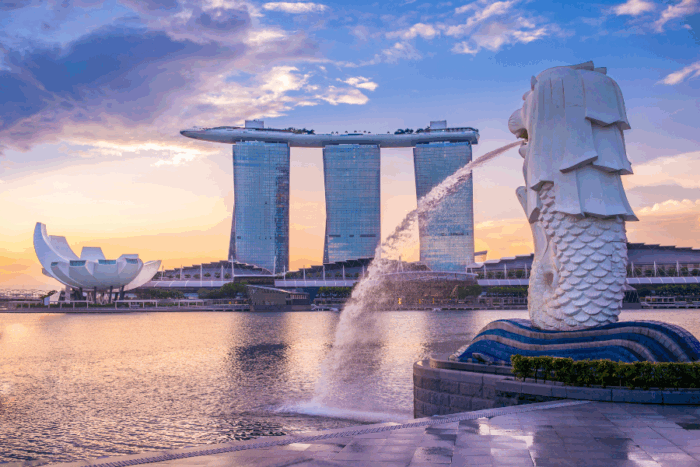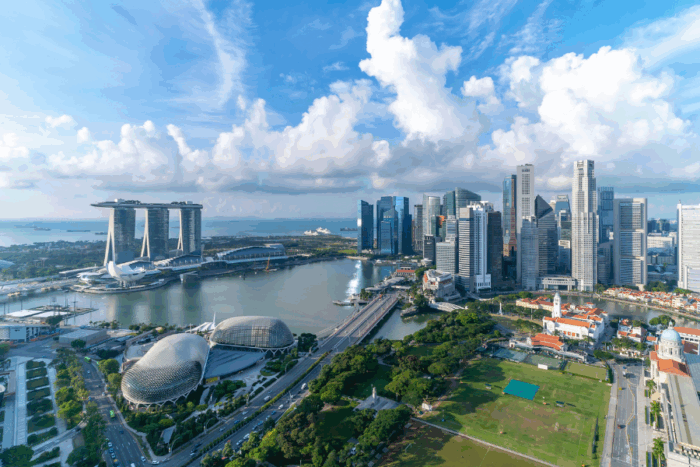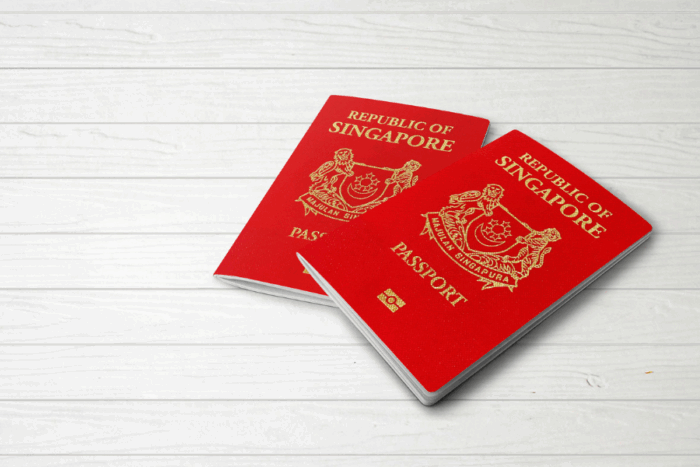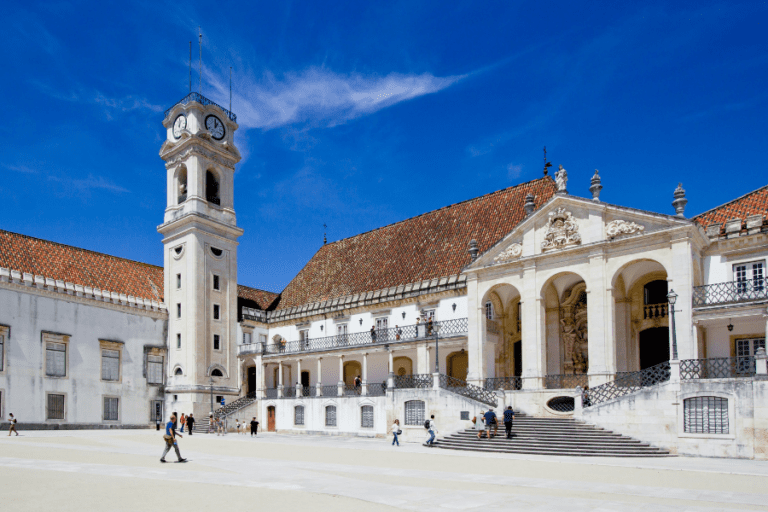- Home
- Articles
- Global Citizen
- Singapore Global Investor Program: The Ultimate 2025 Guide
Singapore Global Investor Program: The Ultimate 2025 Guide
April 25, 2025
Singapore’s rise from a resource-scarce island outpost, ejected from Malaysia in 1965 with little more than a desirable location and visionary leadership, to what it is today is the stuff of geopolitical legend.
In just a few decades, Singapore went from a GDP per capita below US$320 to one of the world’s highest. Current estimates suggest a GDP per capita of around US$93,956, putting it near the very top globally.
This isn’t a coincidence. It’s the result of a long-term plan that focuses on stability, the rule of law, attracting foreign investment with low taxes and investing in its people.
In fact, Singapore’s workforce has long ranked among the best in the world, leading the rankings for the World Bank’s Human Capital Index.
Today, Singapore is a hyper-efficient, safe and advanced region – which the Heritage Foundation crowned the world’s freest economy in its 2025 Index.
It’s a place where things run smoothly, sometimes with almost startling efficiency, and has gone from making textiles in the 1970s to leading in fields like fintech, biotech, and aerospace engineering.
Given this backdrop, it’s hardly surprising that skilled investors and entrepreneurs worldwide seek to set up a base here.
For investors, it’s a simple equation: moving to Singapore means operating within a system designed for top-tier success.
For those looking beyond a standard employment pass, the preferred route is often the Global Investor Programme (GIP).
This is Singapore’s premium residency by investment path. It’s a direct route to permanent residence for successful business owners and investors.
Of course, the GIP isn’t the only option for business-minded folks in Singapore.
The EntrePass is for experienced entrepreneurs or people who want to start a business with venture capital backing and have a developed business plan.
The GIP is less about showing future potential and more about using the wealth you’ve already built.
Compared to international residency-by-investment programmes, Singapore’s GIP requires much higher minimum investments than alternatives like Portugal’s Golden Visa.
Within the offshore industry, it’s generally seen less as a backup residency and more as a primary strategic move.
This guide gives you the actionable insights you need to assess Singapore’s premier investor residency programme in 2025.
Pros and Cons of Singapore’s GIP

Before discussing this program in depth, it makes sense to get an objective sense of its benefits and drawbacks.
The Advantages
Perhaps the GIP’s main attraction is the direct Singapore permanent residency it promises – a quicker route compared to many other visas.
This residency status comes within Singapore’s politically stable and safe country, something highly valued by those managing wealth.
The country’s advanced business climate makes setting up and running a business easy, supported by a strong legal system and excellent global connections.
Besides business, lifestyle benefits like quality healthcare, education and sound infrastructure contribute to a high standard of living.
Singapore’s favourable tax system – especially the absence of capital gains and inheritance taxes, plus competitive corporate tax rates – can offer big savings.
Furthermore, the programme lets you bring your family along.
The Challenges
A downside is that the GIP calls for a very high investment, starting at S$10 million (around US$7.65 million). This makes it one of the most expensive residency programs in the world.
The complex application process involves detailed paperwork and thorough background checks and can take time to complete.
Also, ongoing commitments are needed to renew the Re-Entry Permit, which is usually linked to showing real business progress or spending sufficient time in Singapore.
Life in the Lion City also comes with a high cost of living, especially for real estate.
Lastly, and importantly for families, male children who get permanent residency through the GIP may have to do Singapore’s mandatory National Service.
Qualifying Criteria for GIP in 2025
Gaining access to Singapore’s GIP isn’t merely about showing up with a suitcase full of cash – although a substantial amount is required.
The Singapore Government and the Economic Development Board (EDB) have specific profiles in mind, each with its own set of hoops to jump through.
Let’s dissect who makes the cut.
Profile 1: Established Business Owners
First up are established business owners. If you fit this profile, you’ll need a solid three-year track record of entrepreneurial flair.
Of particular importance, your current company (or combined companies in approved sectors) must have a turnover of at least S$200 million (around US$153 million) in the year before applying.
You must also maintain an average of S$200 million over the last three years and hold at least a 30% stake in the company.
Profile 2: Next-Generation Business Owners
This profile targets those in management (such as C-suite or Board) whose immediate family holds at least 30% (or is the largest shareholder) of a major enterprise.
The bar is higher here in terms of requirements. The family business must have had a turnover of at least S$500 million (about US$383 million) in the last year and an average of S$500 million in the last three years.
Profile 3: Founders of Fast-Growth Companies
You need to be a founder and one of the largest individual shareholders of a private company valued at a minimum of S$500 million.
Most importantly, your company must be backed by reputable venture capital or private equity firms and operate within approved industries.
Essentially, you will have already built something significant that serious players have bought into.
Profile 4: Family Office Principals
Finally, for those steering family wealth, the family office principals’ profile may be suitable.
This route requires at least five years of entrepreneurial, investment or management experience.
The key financial metric here is possessing net investable assets of at least S$200 million (this typically excludes real estate).
Singapore’s GIP Investment Options

Picking the right GIP investment option is the biggest decision you’ll make. It shapes not just the initial cash you’ll need to part with, but also your ongoing duties and how hands-on you need to be.
Option A: Business Investment Route
This path is for the busy business owner.
It consists of investing a minimum of S$10 million directly into starting a new business or expanding an existing business operation in Singapore.
The caveat here is that you can’t just put the money in and walk away. You’ll need to provide a detailed five-year business plan showing your projected hiring and financial targets.
Keeping your Singapore permanent residence status relies on meeting these goals after five years:
- Having at least 30 employees (with rules about hiring Singapore Citizens)
- Reaching specific business spending targets, unless you spend a significant amount of time living in Singapore yourself.
The risk here is tied directly to how well your business performs. It suits those wanting to build and run a company locally, but certainly not for passive foreign investors.
Option B: GIP Select Fund Route
Option B might suit you well if you prefer a less hands-on approach, though it’s a larger required investment of S$25 million.
Your investment goes into a GIP approved fund by Singapore’s Economic Development Board, and these funds invest in Singapore based companies.
The main requirement for renewing your residency status is straightforward:
- Just keep your S$25 million investment in the fund throughout the required period
- Alternatively, meet the physical residency rules.
You don’t have to run a business entity every day, but your money is still at risk if the fund doesn’t do well. This option is good for people who want to invest in Singapore’s economy through a mix of different investment categories managed by experts.
Option C: Single-Family Office (SFO) Route
This option requires setting up a Singapore-based Single-Family Office (SFO) that manages at least S$200 million in assets.
A key condition is that within 12 months of getting your initial approval, at least S$50 million of these assets must be invested into specific Singapore-based categories, such as locally listed stocks, certain debt securities, Singapore-focused funds or private equity in local businesses.
You need to maintain this S$50 million local investment for the first five years.
Running the SFO itself involves moderate active management – overseeing the office operations and investments.
Renewing your residency is tied to the SFO hiring at least five new investment professionals (three must be Singapore Citizens) and meeting spending targets or meeting the physical residency requirement yourself.
The GIP Application Process: A Step-by-Step Guide
Next, let’s walk through the typical application process for Singapore’s GIP initiative.
In terms of timeline, be prepared for a wait. The whole process, from sending your application to getting final approval, usually takes about six to eight months, though it can take up to 12 months.
Step 1: Submit the Application to EDB
First things first, you need to compile and submit your comprehensive application pack.
This includes specific forms (often requiring both online submission and hardcopy versions) and attaching supporting documentation.
Step 2: Interview with EDB
If your initial application passes muster, you’ll likely be invited for an interview with the EDB.
This is their chance to probe your background, business acumen, the proposed investment plan and commitment to contributing to Singapore’s economy.
Step 3: Receive Approval-In-Principle (AIP)
Success at the interview stage leads to the much-anticipated Approval-in-Principle (AIP).
Conditional approval is officially issued by Singapore’s Immigration & Checkpoints Authority (ICA) and is typically valid for six months.
It essentially signals that you can get permanent residency, provided you now make the qualifying investment.
Step 4: Fulfil the Investment Requirement
With approval in principle, the clock starts ticking. You have precisely six months from the date on the AIP letter to make the full investment according to your chosen option.
Step 5: Provide Investment Evidence to EDB
Once the investment is made, you must gather supporting documents (like bank statements, share certificates, or fund subscription documents) and submit this evidence.
Step 6: Verification and Final Approval
The EDB will then verify your investment documentation.
Assuming everything checks out, they’ll give the nod to the immigration authority, who will then issue the Final Approval letter for your Permanent Residence status.
Step 7: Formalise Permanent Residence Status
With the Final Approval letter in hand, the last step is to formally complete the residency formalities in Singapore.
You must do this within 12 months of receiving the final approval.
Singapore Global Investor Program: FAQs
Singapore consistently ranks high for living costs. Excluding rent, monthly expenses average around S$1,500 (about US$1,150) for a single person or S$5,500 for a family. Housing and cars add substantially to this, though local food and transport are more affordable.
Yes, Singapore is globally recognised as expensive. For example, renting a central one-bedroom apartment averages over S$3,600 monthly (US$2760 approx), and the certificate needed to buy even a small car (COE) recently exceeded S$97,000 (US$74,000 approx.) – that’s just for the right to buy one.
The easiest way to get permanent residency is through the Professionals/Technical Personnel & Skilled Workers (PTS) scheme. This is usually after they have an Employment Pass or S Pass.
The Global Investor Programme (GIP) grants permanent residency directly to eligible high-net-worth individuals making substantial business investments. An Employment Pass is a work visa tied to a job – holders can apply for permanent residence later, but it’s not guaranteed.
For long-term stays, you generally need to secure an appropriate pass first. Common routes include obtaining an Employment Pass or S Pass sponsored by a Singaporean employer or potentially through study, family ties or specific investment schemes.
Both are major, expensive hubs where things are happening, and people want to be. Singapore is often praised for its political stability and technological strength. Hong Kong traditionally excels in finance and trade, offering closer integration with mainland China.
Yes, Singapore generally welcomes foreign investment. Foreigners can readily invest in the stock market (SGX) and set up businesses there. Some restrictions apply, notably concerning ownership of most residential landed property and in specific strategic sectors.
Is Singaporean Citizenship Right for You?

Singapore is a hard place for any wealthy investor to ignore.
The Global Investor Programme makes it even more attractive to those who want to base themselves or their businesses in this top-tier Southeast Asian nation.
Beyond the clear benefits of permanent residency, the GIP can also lead to Singaporean citizenship, giving you access to one of the world’s best passports.
But, and this is a big but, this step requires a massive commitment.
Put simply, Singapore does not allow dual citizenship, meaning you must give up your other citizenships if you want a Singaporean passport.
Because of this rule, Singaporean citizenship only works for certain people who are ready for that level of commitment. For many business owners and investors, not being able to hold multiple passports is a major drawback.
Luckily, there are many different residency and citizenship investment options available. If you like the GIP setup but not the citizenship rule, Portugal’s Golden Visa offers EU residency and potential citizenship with more leeway, a lower cost and other benefits.
For lower-cost options, several Caribbean countries have citizenship by investment programmes noted for being quick and more affordable.
If you want simple, low-tax residency or citizenship, Panama offers a relatively straightforward path.
Additionally, for those wanting a high-quality European option, despite tough requirements and a high investment level, Malta can give you EU citizenship.
With so many options, it’s important to understand the details of each program, how much you must invest, the residency rules, the steps to citizenship and more.
Finding the ideal place that matches your situation and goals and offers the optimum benefits is what we call going where you’re treated best.
At Nomad Capitalist, we help people work through these complex choices. To learn more, set up a call with us today.



How To Get the Portugal Startup Visa in 2025: Rules, Benefits, and Costs
The Portugal Startup Visa is a residency program for non-EU citizens who want to bring innovative business ideas to Portugal. The program is suitable for tech-driven companies and has no minimum investment requirements, which makes it appealing to international entrepreneurs. In this guide, we’ll explore the Portugal Startup Visa and cover: What Is the Startup […]
Read more

Portugal Residency Requirements: Eligibility and Application Process Explained
Portugal allows foreigners to obtain residency permits and live in the country for an extended period. Depending on the type of visa, foreigners can secure temporary or permanent residence and eventually apply for Portuguese citizenship. In this guide, we will outline the Portugal residency requirements for expats, focusing on the following: Obtaining Portuguese Residency: An […]
Read more

Portugal Entrepreneur Visa: Benefits, Requirements, and Application
If you wish to relocate your business to Portugal or start a new one in the country, obtaining the Portugal Entrepreneur Visa (also known as the D2 Visa) is among the first steps you should take. To help you complete the process as effortlessly as possible, this guide will cover: What Is the Portugal D2 […]
Read more




